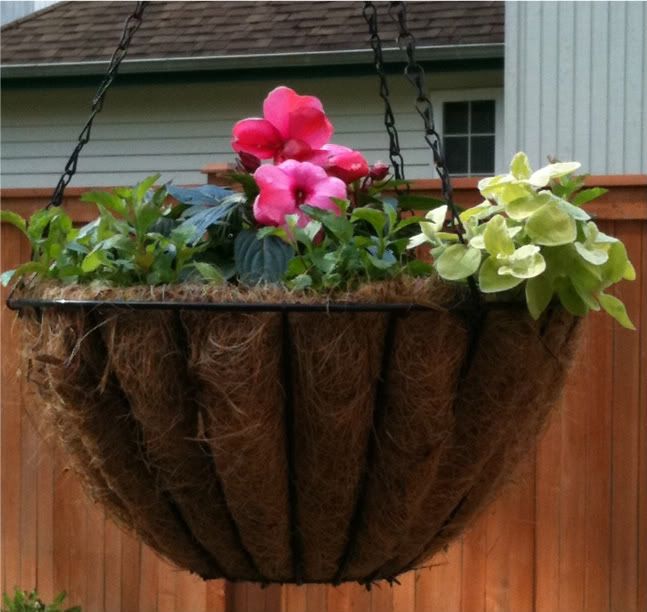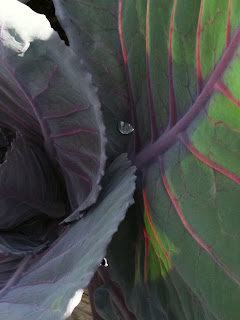The Notes That Follow Sow
Cares melt when you kneel in your garden.
Tuesday, August 7, 2018
Compost!
I once read that you know you have finished compost when you can no longer distinguish what kind of plant material, exactly, had gone into the making. I think I've accomplished that and it took only two years of absolute neglect here in the desert climate of Grand Coulee, Washington.
Monday, July 4, 2011
The Unexpected and Subtle Beauty of the Vegetable Garden
Tuesday, May 24, 2011
Tomato Surprise!
As you can see, I finally got some tomatoes potted up and settled in their new home...four down and four to go in the greenhouse. I had problems in last year's cool, wet summer with fungus and mildew problems in the greenhouse, so I'm spacing my pots farther apart this year. Hopefully, even with less-that-perfect weather, this will help avoid that nastiness.
I also have a flat of tomatoes about 4 inches tall that my husband acquired from a co-worker's son. He did a great job with the starts...they're sturdy and healthy looking but, unfortunately, he didn't do such a good job labeling thems. Meaning that I have about 20 mystery tomatoes! These will be going out in the garden beds but I'm not sure what kind of provisions to make for staking them. I know that "some" of the starts are Romas, which would be okay in standard tomato cages. Which, of course, would be entirely inadequate for a big, rambling indeterminate variety.
So however difficult it may be, I'm just going to have to plant them, hope for the best and see what happens. Stay tuned.
Sunday, May 1, 2011
And So We Begin Again
Even so, things are underway in the garden now, even though the weather has given us no reason to hope that this summer will be any warmer or drier than last...but what are gardeners if not optimists?
One of the additions we made to the garden last year was to add two supports for hanging baskets on the north side of the garden. Each support holds two, 12 inch baskets and I'm pretty excited about my plant choices this year.
I selected New Guinea Impatiens "Celebrette" to provide height. For my trailers, I selected Lobelia "Sapphire, white Bacopa and Helichrysum Petiolatum "Aureum." If the last has a common name, I don't know what it is but the lime green foliage looks amazing with the dark green of the Impatiens.
I planted the baskets last weekend and kept them in the greenhouse until today, when I hung them out. I think they look pretty good now; I can hardly wait to see what they'll look like when they fill out.

Saturday, June 5, 2010
I Am an Avenging Angel of Death

They haunt the dark hours between dusk and dawn.
Our situation is desperate; we are nearly undone.
And what's up with that anyway? This is the kind of damage I would expect if I'd set out marigolds. I once had an entire flat of marigolds reduced to sticks over night.

I happened to have "a few" yogurt cups stored away, waiting for a new purpose, so I decided to put them to use as beer traps. I cut Vs in the rims of the yogurt cups and buried them in the soil so that the bottom of the Vs were flush with the soil surface.
But don't tell my husband.
Sunday, January 3, 2010
2010 Goals for the Garden

I am "having goals" this year, rather than "making resolutions." Goals for my garden and in almost every area of my life. I figure I may not reach all the goals, but by striving to reach them, I'll almost certainly end up ahead of where I would have been without them. Here is my initial list of garden goals for 2010. Not all are vegetable garden related.
- Soil amendments starting NOW to combat the totally worthless soil mix we purchased to fill our raised beds. Yeah. The stuff that's apparently devoid of any nutrients whatsoever.
- Related to #1, test the soil pH and plan amendments accordingly.
- Determine the proper dates to seed each vegetable and flower, either for transplant or direct seeding, and (this is the tricky part) stick to the plan.
- Do my best, within the bounds of the soil improvements I can make in one season, to harvest enough produce to preserve some for future use.
- Related to #4, try my hand at canning, pickling and freezing (even if I have to buy produce).
- Plan a winter garden that actually produces fresh produce throughout the winter.
- Try to figure out why yields were so poor on my tomatoes last year and improve on that performance.
- Complete the planting of my sunny garden and add my "personal patio" with chair and table.
- Re-design the foundation planting in the front of the house. Possibly add a bench.
- Add a fourth bench rock to the front seating area.
- Improve the grassy areas in the front yard using weed control, fertilization and watering.
I think that's it. This list is pretty off the top of my head, and while the vegetable garden goals are pretty firm, the others are flexible at this point.
Failure, er, Hard Lessons in the Garden
My poor garden is very nearly as neglected as this blog (insert sad face here).
Despite having high hopes for winter time harvests of fresh, tasty vegetables, I made some crucial errors that resulted in "less than optimal results." Or a complete and utter failure.
As previously mentioned, I got started a bit too late with my fall/winter crops. Then I was caught completely unawares by a hard, prolonged freeze in December, with temperatures dipping into the teens for several nights. As a result, my broccoli, which had been the jewel of my garden, now looks rather sad. Or dead.
 Before the deep freeze hit, I did harvest a very tiny head of broccoli and a small-ish head of cauliflower. As I was preparing to cook the cauliflower, I found one of these hidden inside. It appeared to be dormant. Or dead.
Before the deep freeze hit, I did harvest a very tiny head of broccoli and a small-ish head of cauliflower. As I was preparing to cook the cauliflower, I found one of these hidden inside. It appeared to be dormant. Or dead.
Either way it wasn't very appetizing, which isn't to say that we didn't eat it anyway.
To combat my abysmal ignorance on the subject of winter gardening, I purchased Winter Harvest Handbook: Four Season Vegetable Production for the 21st Century by Eliot Coleman. Mr. Coleman winter gardens on a huge scale. With actual success.
One tidbit I've already gleaned concerns day length, which controls the amount of growth you can expect from your vegetables. So even though my winter temperatures are (usually) more moderate than those in Maine, where Coleman operates, I'm farther north and have shorter days. Accordingly, I have to plant my winter harvest crops earlier so that they can achieve usable size before day length drops under ten hours.
Luckily for me, the U.S. Naval Observatory has conveniently posted the requisite data right here, which means that I won't have to record careful observations on the time the sun rises and sets in my area, which means I won't have to endure another "learning experience" next fall.
What once looked like this:
Now looks like this:
And if you think the broccoli looks bad, you should see the cauliflower. I'm not posting a photo out of blogging courtesy to those with weak stomachs.
The one thing that appears to have survived the cold snap unscathed is the corn salad, or mache.
I realize that doesn't look all that promising, but I assure you, the visible damage is from pests, not Jack Frost.
There are also a few spinach seedlings surviving under one of my coldframes.
I'm disappointed and in addition to that, yes, I'm taking some heat from my husband as the not insubstantial cost of the establishing the garden was sold with the promise of fresh vegetables in mid-winter. But, like generations of gardeners before me, I'm hopeful, if not yet confident, that I can win my bet with nature next winter.



























